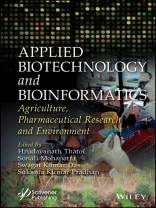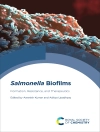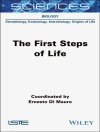This comprehensive reference book discusses the convergent and next-generation technologies for product-derived applications relevant to agriculture, pharmaceuticals, nutraceuticals, and the environment.
The field of modern biotechnology is a multidisciplinary and groundbreaking area of biology that includes several cutting-edge methods due to developments in forensics and molecular modeling. Bioinformatics is a full-fledged multidisciplinary field that combines advances in computer and information technology. Numerous applications of bioinformatics—primarily in the areas of gene and protein identification, structural and functional prediction, drug development and design, folding of genes and proteins and their complexity, vaccine design, and organism identification—have contributed to the advancement of biotechnology. Biotechnology is also essential to crop improvement in agriculture because it allows genes to transfer across plants to increase traits such as disease resistance and yield. It also plays a broad role in healthcare, including genetic testing, gene therapy, pharmacogenomics, and drug development. Bioremediation and biodegradation, using microbial technologies to clean up environmental contamination, waste management technologies, and the conversion of organic waste to biofuels. Bioinformatics plays a critical role in analyzing different types of data created by high-throughput research methods—such as genomic, transcriptomic, and proteomic datasets—that are useful in addressing various problems related to disease management, clean environment, alternative energy sources, agricultural productivity, and more.
Audience
The book will interest biotechnology researchers and bioinformatics professionals working in the areas of applied biotechnology, bioengineering, biomedical sciences, microbiology, agriculture and environmental sciences.
قائمة المحتويات
Preface xvii
Part I: Agriculture 1
1 Next-Generation Sequencing in Vegetable Crops 3
Meenu Kumari, Tanya Barpanda, Meghana Devireddy, Ankit Kumar Sinha, R. S. Pan and A. K. Singh
1.1 Introduction 4
1.2 Next-Generation Sequencing Approach in Genomics 5
1.3 NGS Approach in Single-Nucleotide Polymorphic Markers Development 13
1.4 Next-Generation Sequencing Approach in Trait-Specific Breeding 15
1.5 Next-Generation Sequencing Approach in Metagenomics 18
1.6 Next-Generation Sequencing Approach in Transcriptomics 19
1.7 Next-Generation Sequencing Approach in Exome and Captured Sequencing 22
1.8 Applications of Exome and Captured Sequencing in Crop Research 23
1.9 Conclusion and Future Prospects 24
References 25
2 Application of Bioinformatics Tools in Rice Genomics Research 37
Dhanawantari L. Singha, Debajit Das and Jitendra Maharana
2.1 Introduction 38
2.2 Role of Genomics in Rice Research 38
2.3 Model Plant for Genomic Research: Rice 39
2.4 High-Throughput Sequencing 41
2.5 Genome-Wide Association Study (GWAS) 45
2.6 Bioinformatics Approach to Study Stress Conditions in Rice 46
2.7 Application of Bioinformatics Tools in Advanced Rice Genomics Research 51
2.8 Current Challenges of Bioinformatics Tools for Rice Genomics Research 57
2.9 Conclusion 60
Conflict of Interest 60
References 61
3 Computer-Aided Vaccine Design: Applications in Agriculture 73
Tanmaya Kumar Sahu and Atmakuri Ramakrishna Rao
3.1 Introduction 74
3.2 Agriculturally Important Animals 75
3.3 Diseases Affecting Animal Health in Agriculture 75
3.4 Vaccination in Agriculture 77
3.5 Vaccine 77
3.6 Intervention of Computer in Vaccine Designing 81
3.7 In Silico Vaccine Designing: Agricultural Applications 90
3.8 Conclusion and Future Prospects 91
References 92
4 Genomics to Phenomics: A Paradigm Shift in Crop Science Research 97
Biswajit Lenka, Manasi Dash and Lakesh Muduli
4.1 Introduction 98
4.2 Genomics in Crop Improvement 98
4.3 Advances in Genomics-Assisted Breeding 98
4.4 Phenotyping 103
4.5 Phenomics 103
4.6 Phenomics Approaches in Crop Improvement 104
4.7 Conclusion 105
References 105
Part II: Pharmaceutical Research 109
5 Molecular Modeling and Drug Development 111
Howida A. Elseedy, Caroline Kiriacos and Triveena M. Ramsis
5.1 Introduction 111
5.2 Structure-Based Drug Design 112
5.3 Docking 115
5.4 Ligand-Based Drug Design 117
5.5 Pharmacophore 118
5.6 QSAR 119
5.7 Virtual Screening 122
5.8 Pharmacophore-Based VS 124
5.9 Similarity-Based VS 125
5.10 Homology Modeling and Protein Folding 125
5.11 In Silico Pharmacokinetics 128
5.12 Conclusion 131
References 132
6 Comparative Study on Tannase Sequence and Structure of Lactiplantibacillus: An In Silico Protein Variability Analysis and Its Impact on Microbial Speciation 139
Ishita Biswas, Debanjan Mitra and Pradeep K. Das Mohapatra
6.1 Introduction 140
6.2 Materials and Methods 141
6.3 Results and Discussion 143
6.4 Conclusion 153
References 153
7 Probiotics: A Novel Natural Therapy for Oral Health 157
Preeti Pallavi, Vikas Kumar, Sangeeta Prakash and Sangeeta Raut
7.1 Introduction 158
7.2 Background 160
7.3 Mechanism in Oral Diseases Prevention by Probiotics 166
7.4 Probiotic Formulation 169
7.5 Prevention and Oral Health Management 172
7.6 Concluding Remarks 173
7.7 Future Aspects 174
References 176
8 The Preventative and Curative Functions of Probiotics: A Paradigm of Food as Drug Revolution 181
Mohammad Zaki Shamim, Jibanjyoti Panda, Gargee Mohanty, Bhaswati Gogoi, Kaustuvmani Patowary, Bishwambhar Mishra and Yugal Kishore Mohanta
8.1 Introduction 182
8.2 Criteria for Choosing Probiotics and the Bare Minimum Needed 183
8.3 Action Mechanism of Probiotics 184
8.4 Probiotics in the Clinical Practice: A Growing Trend 185
8.5 Potential Preventative Roles of Probiotics 186
8.6 Therapeutic Use of Probiotics 195
8.7 Recent Advancement in Probiotics 202
8.8 Conclusion and Recommendation 208
Acknowledgments 208
References 209
9 Probiotics in the Prevention and Treatment of Psoriasis 217
Prativa Biswasroy, Deepak Pradhan, Dilip Kumar Pradhan, Goutam Rath and Goutam Ghosh
9.1 Introduction 218
9.2 Interruption of the Microbiome: A Pathogenic Effect in Psoriasis 219
9.3 Therapeutic Effect of Probiotics for Psoriasis 223
9.4 Conclusion 229
References 230
10 A Gateway to Multi-Omics‐Based Clinical Research 235
Ashutosh Sahoo, Deepanshu Verma and Prajnadipta Panda
10.1 Introduction 236
10.2 Importance of Multi-Omics 237
10.3 Genomics and Relevant Clinical Studies Along with Its Tools and Methods 239
10.4 Proteomics and Relevant Clinical Studies Along with Its Tools and Methods 242
10.5 Sample Type and Acquisition 242
10.6 Various Data Acquisition Methods for Proteomics Data Include the Following 242
10.7 Techniques Used in Clinical Proteomics 244
10.8 Analysis Tools in Clinical Proteomics 244
10.9 Metabolomics and Relevant Clinical Studies Along with Its Tools and Methods 245
10.10 Different Types of Metabolomics 245
10.11 Techniques and Tools Used in Metabolomics 246
10.12 Metabolite Databases 248
10.13 Data Analysis Tools and Software 249
10.14 Application of Metabolomics in Clinical Studies 249
10.15 Conclusion 250
References 251
11 Inherent Observation of Mucosal Non-Specific Immune Parameters in Indian Major Carps 257
Supriya Dash and Swagat Kumar Das
11.1 Introduction 258
11.2 Materials and Methods 258
11.3 Results and Discussion 259
11.4 Conclusion 266
References 266
Part III: Environment 269
12 Eco-Friendly Approaches for Converting Organic Waste to Bioenergy for Sustainable Development 271
Krishna Kumar Jaiswal, Chandrama Roy Chowdhury, Deepti Yadav, Swapnamoy Dutta, Ishita Banerjee, Km Smriti Jaiswal, Arun Prasath Ramaswamy, Mrinal, Sangmesh B., Amit K. Jaiswal, Vinod Kumar and Krishnan Kanny
12.1 Introduction 272
12.2 Organic Waste in the Bioenergy Generation 274
12.3 Categories and Characteristics of Organic Waste 275
12.4 Organic Waste Based on Origin 276
12.5 Organic Waste Based on the State of Matter 277
12.6 Organic Waste Based on the Level of Production 278
12.7 Characteristics of Organic Waste 278
12.8 Greenhouse Gases (GHGs) 279
12.9 Benefits of Organic Waste 280
12.10 Current and Prospective Use of Organic Waste 281
12.11 Sustainable Bioenergy and Biofuels from Organic Waste 282
12.12 Conversion of Organic Waste into Bioenergy and High-Valued Products 286
12.13 Biofuels from Organic Waste: Biochemical and Thermochemical Processes 286
12.14 Fermentation 286
12.15 Anaerobic Digestion 289
12.16 Combustion 290
12.17 Pyrolysis 290
12.18 Gasification 291
12.19 Biorefinery Concept Based on Organic Waste for Clean Energy Management 292
12.20 Success and Challenges of Organic Waste for Bioenergy 293
12.21 Conclusion and Recommendations 294
References 295
13 Utilization of Food Waste for Bioenergy Production 303
Srutee Rout, Rakesh Kumar Gupta, Sangeetha Karunanithi, Gnana Moorthy Eswaran U., Proshanta Guha and Prem Prakash Srivastav
13.1 Introduction 304
13.2 Potential of Food Waste for Bioenergy Production 306
13.3 Bioenergy from Food Waste 308
13.4 Conclusion 323
References 324
14 Photosynthetic Microalgal Microbial Fuel Cell (PMMFC): A Novel Strategy for Wastewater Treatment and Bioenergy Generation 331
Jagdeep Kumar Nayak, Rahul Gautam, Kundan Samal and Uttam Kumar Ghosh
14.1 Introduction 332
14.2 Microbial Fuel Cell 333
14.3 Types of PMFC 336
14.4 Role of Algae in PMFC 338
14.5 Conclusion 341
References 342
15 Self-Cleaning Aquarium: The Microbial Biofilm Approach for Ammonia Bioremediation 347
Shaon Ray Chaudhuri, Tethi Biswas and Indranil Mukherjee
15.1 Current Scenario of Fresh Water Scarcity and Impact of Aquaculture 348
15.2 Existing Technologies for Aquaculture Effluent Treatment for Environmental Sustenance 349
15.3 The Novel Rapid Biofilm Reactor-Based Ammonia Removing System 352
15.4 The Case Study of the Self-Cleaning Aquarium 358
15.5 Conclusion and Future Application 362
Acknowledgments 363
References 364
16 Metagenomics Unveiled: Deciphering Microbial Responses to Climate Change 369
Megha Kaviraj, Manojit Singh, Soumendranath Chatterjee and Upendra Kumar
16.1 Introduction 370
16.2 Climate Change and Its Impact on the Environment and Microbiome 372
16.3 Metagenomics as a Tool for Climate Change Research 374
16.4 Microbial Adaptation to Climate Change 376
16.5 Feedback Loops and Climate Change 377
16.6 Metagenomics in Climate Change Mitigation 379
16.7 Case Studies and Research Findings 380
16.8 Metagenomic Climate Model Frame 384
16.9 Challenges and Future Directions 386
16.10 Conclusion 387
Acknowledgments 387
Author Contributions 387
Conflict of Interest 388
References 388
17 Biosensor: A Tool for Assessment of Soil Pollutants 395
Saheed Garnaik and Jagamohan Nayak
17.1 Introduction 396
17.2 Working Principles 397
17.3 Types of Biosensors 398
17.4 Application of Biosensors 400
17.5 Advantages, Disadvantages, and Adoption of Biosensors 402
17.6 Ethical Considerations and Future Challenges 403
17.7 Conclusion 404
References 405
18 Transcriptome-Guided Characterization of Molecular Resources in Mussels 407
Snigdha Baliarsingh, Mariadoss Selvanayagam, Hrudayanath Thatoi, Shailesh Saurabh, Yong Seok Lee and Bharat Bhusan Patnaik
18.1 Introduction 408
18.2 Species of Mussels Sequenced at the Transcriptome Level 414
18.3 Transcriptome Pipeline for Mussel Molecular Resources 417
18.4 Mussel Transcriptome Assembly and Annotation 425
18.5 Conclusions and Future Perspectives 430
Acknowledgments 430
References 430
Index 437
عن المؤلف
Hrudayanath Thatoi, Ph D, is the Research Director at the Center for Industrial Biotechnology, Siksha ‘O’ Anusandhan (SOA) University, Odisha, India. He obtained his doctorate in botany from Utkal University, Odisha, India. His research interests include sustainable production of renewable energy, mushroom diversity and bioactivity, bioremediation, etc. He has published 25 books and more than 300 research papers in national and international journals. He is the recipient of the Samanta Chandrasekhar Award by DST, Govt. of Odisha.
Sonali Mohapatra, Ph D, is a post-doc research associate in the Department of Biological Systems Engineering, University of Wisconsin, Madison, USA after obtaining her doctorate in biotechnology engineering. Her research focuses on bioprocessing technologies. Apart from her publications and edited books, she has also been part of successful scale-up projects in the synthesis of prebiotics from dairy waste streams.
Swagat Kumar Das, Ph D, is an assistant professor in the Department of Biotechnology, Odisha University of Technology and Research, Bhubaneswar, Odisha, India. He obtained his doctorate from Ravenshaw University, Odisha, India. He is a fellow recipient of the Eurasian Academy of Environmental Sciences (FEAES) and the Society of Innovative Educationalists, Scientific Research Professionals (FSIESRP). He has published more than 30 publications in various national and international journals and 12 book chapters.
Sukanta Kumar Pradhan, Ph D, serves as HOD in the Department of Bioinformatics, Odisha University of Agriculture and Technology, Odisha, India. He obtained his doctorate in biotechnology from Ravenshaw University, Odisha, India. His research interests include genomics, metagenomics, transcriptomics, and bioinformatics. He has published more than 60 research papers in reputed national and international journals and 8 book chapters.












